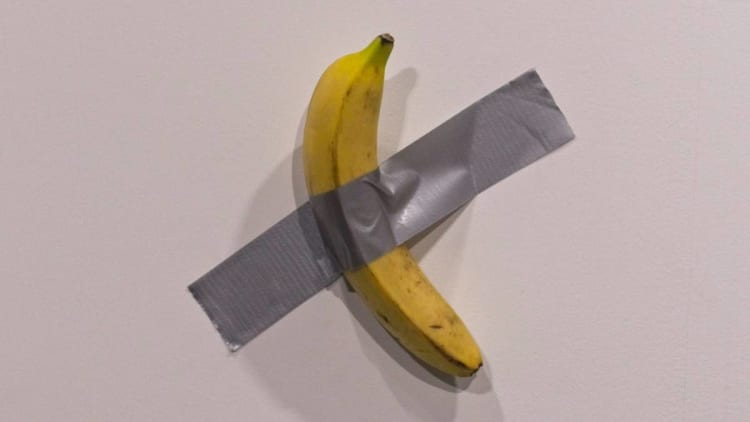We had the chance to meet the painter and graffiti artist Germán Bel in his studio located near Valencia in Spain. This pioneer of the Spanish street art lent himself to the game of the question and answer.

Interview with Germán Bel aka Fasim
Hello Fasim, thank you for agreeing to answer our questions, how did you start painting?
Hello Art Shortlist friends, it is a great pleasure for me to answer you.
I started painting when I was still a child, it seems that we learn to paint before we learn to speak. To my family I seemed a bit autistic because I was always very quiet and silent, when they went to see if something happened, worried, they found me drawing with a tremendous expression of satisfaction. I remember creating my first work when I was about 6 years old, it was a crucifixion on old sheet cloth and it was at my maternal grandparents' house where I lived, no doubt because of the religious influence I received from them because they were very believers.
At school, I was so abstracted in class that when the teachers asked me something and I came back to reality, I did not know what they were talking about or what they had asked me, because I was drawing, I did nothing else even in class, I filled the school books from top to bottom with drawings and sketches in such a way that neither texts nor images could be seen. I rebelled against everything, I was a very difficult child, I had very strong fights with the teachers, but I did my own thing, I just wanted to paint.
The neighborhood where I grew up is called La Trinidad, it's a neighborhood on the outskirts of Barcelona, there were many problems of delinquency, so I didn't go out much. I used to spend hours of my time concentrating on drawing, I made a lot of comics and I also read a lot. My grandmother sewed and embroidered, she did tremendous floral embroidery and I would draw next to her.
In my house, the floor tiles of the house had very suggestive shapes for feverish imaginations and I had a game with them that was to compose impossible figures, very funny and I was marking them in pencil so as not to lose them, it became something very serious for me and I got to have many "caught", but I earned a good slapping, but I did not give up. I think they would be my first urban art interventions. This pareidolic game, will become the basis of my later work, although in those early days I was not aware that it was a game, for me it was something vital. When the HipHop boom arrived in Barcelona, in reality I was already very prepared to get started in a trend that was on the fringes of the established, which was what attracted me the most, to be able to rebel against a systemic oppression that stifled all my spontaneous creativity.
Can you explain the meaning and origin of your name "Fasim"?
My nickname 'Fasim' comes from a succession of previous names, it comes from the graffiti game, from the original writing and I started writing it in the street, when the Hip Hop phenomenon emerged in Spain in the mid 80's, which was a real cultural revolution, at that time I painted on anything I could get my hands on; crayons, hair sprays for carnival, some worker's forgotten brushes, worn out sprays from the workers to paint the floor, hairspray, varnish, school books, the walls of my room, my shoes, my school bag...
That's how I started, influenced by the movies coming from the United States about Break Dance, such as 'Beat Street', although the real emergence of the graffiti game in Spain was with the film by Henry Chalfant and Toni Silver; Style Wars (1983), with which we could clearly understand the phenomenon that had developed in the subway cars of New York, was like the cornerstone that translated for us (like Champollion with the Rosetta stone), the whole secret world of writing, a world far away from us enthusiastic young Spanish rebels who also wanted to follow this artistic trend.
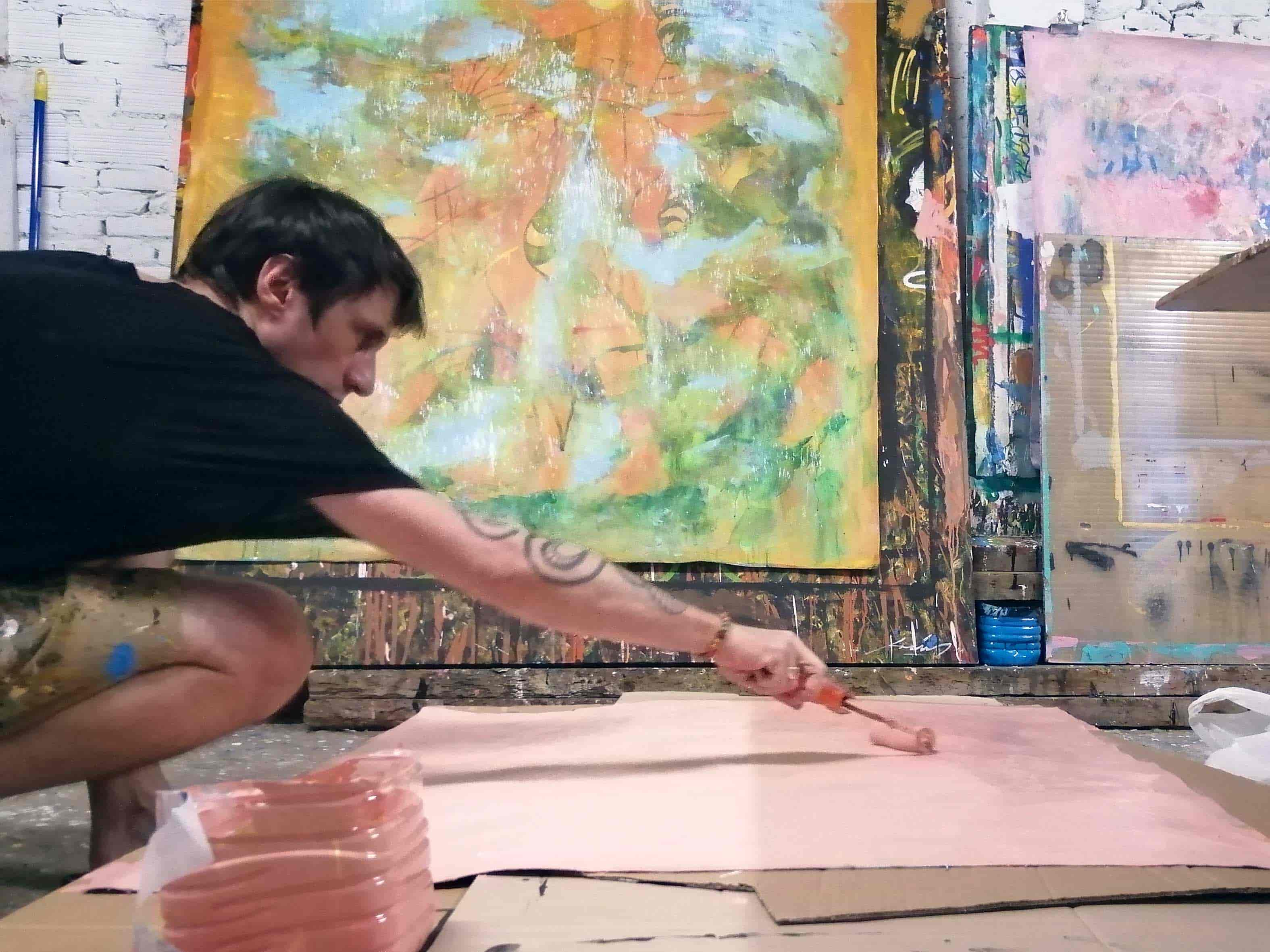
Germán Bel aka Fasim in his studio
Years later I would have the good fortune to meet Henry for a few days while we helped him set up his exhibition entitled: Graffiti, art or vandalism? I asked him many questions and he translated many things from the Subway Art book and some slideshows he showed us, they were phrases or concepts that I did not understand and he patiently explained to me; this group is such and such, this is New York slang…
In this first moment, I started to write: Fase1, which was my first serious name, the name that defined me and made me known in the scene, although I kept modifying it until I ended up with Fasim, because it was the grouping of letters that I liked the most. It turns out that Fasim is a proper name in India, and although it has no apparent relation, it was purely by chance.
What are your sources of inspiration, and which artists especially influence you?
For many years my influences come from artists, painters, musicians, writers, poets, artisans from all countries of the world, art is a universal language that unites people in a surprising way, it does not speak any language and on the other side of the world can understand and appreciate your work. Now with the internet it is fascinating the power of transmission and closeness that happens with countries and artists, while governments seem to want to keep us at odds, with wars and with differences of all kinds (gender, skin color, religious ideas ...) art encourages us to approach, to be a common people, to have a common vision, without differences.
When I started in urban art I had no great knowledge about art and what interested me most was painting in the street, you know, youth and fun, but everything changed on a trip I made to Paris in 89/90, because I had the good fortune to be invited for a few days in the studio of JonOne in the Hôpital éphémère in the Saint-Denis district and I could see first hand all the development that had begun in Europe on canvas, because no doubt it was in that workshop where it all started. They were influenced or inspired by artists like Rammellzee or A-One, the true pioneers of urban art as an artistic discipline, influenced in turn by the great star of neo abstract expressionism; Jean-Michel Basquiat.
I was able to see the large collection of works on canvas that Jon had in his house; Lady Pink, Lee Quiñones, Rammellzee, Daze or Crash, among many others. Also there in his house he showed me books by Jean-Michel Basquiat or Miquel Barceló, it was the first time I had contact with this kind of artists and something stirred deep inside me, it generated that pulsions that were frozen, thawed in a brutal way and my creativity shot in many directions at the same time. So I was deeply influenced by a cascade of artists on this first trip to Paris, which I consider my great initiatory journey of youth. Back in Barcelona I was able to locate the art galleries that at that time were the most avant-garde and I started to visit many museums as well, I appreciated many artists such as; Joan Miró, Antoni Clavé, Georges Braque, Picasso or Antoni Tàpies.
Prior to this trip, Futura 2000 came to Barcelona a few years earlier to make an exhibition at the gallery Arcs & Cracs, so as a child I witnessed the passage of graffiti and urban art elevated to the category of art, as Henry said.
How would you describe your art, did you abandon graffiti for abstraction?
My current work is the result of multiple previous transformations, it has to do more with a poetic-pictorial vision and expression than with representing objects or creating abstractions based on games or compositions of shapes.
Painting is something that began long before painting in the street, when I was a child, at first as a game of the gaze that I practiced. I have been a very solitary child, I have had no siblings, so I have spent my childhood practically inside my little universe which was my room, there I drew, painted, read many adventure books and many comics, played at being a pirate shipwrecked on a desert island, others I was a Native American, in short, I lived in a parallel world very close to a fictional existence, between an imaginary world and reality. As I told you before, I also played to follow shapes in the tiles that my grandmother had on the floor of the house, especially those I saw in the sink while sitting on the toilet, is the way I remember that I began to create art without knowing it was, to paint with my eyes, to create shapes for pure delight or fun of the mind.
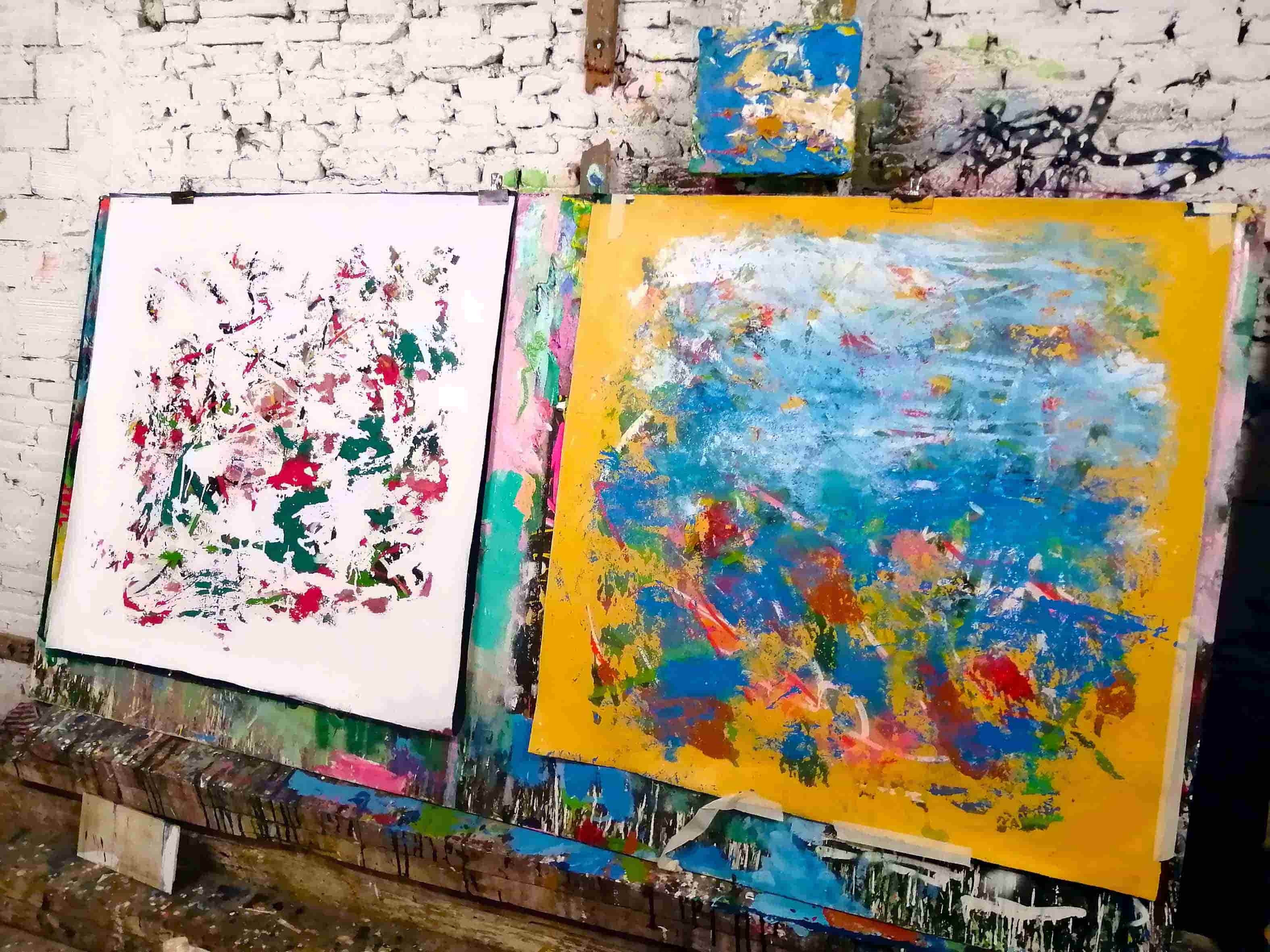
Two abstract compositions by Fasim
Some time later I would learn that this was the same vision that shamans and cave painters had when they perceived the contours of rocks that suggested bison shapes that they would then trace and paint, but first they perceived it. We are talking about pareidolias in effect, which is a cognitive perception that all mammals and also sapiens-sapiens possess and it happens to all of us to a greater or lesser degree, although I see that the most sensitive people perceive it more clearly.
The painters and shamans of the Paleolithic period believed that an invisible membrane separated the wall of the real world from the world of the spirits, through which the whole world of images appeared in the states of trance. The Egyptians also had this sacred feeling with the pareidolies, it can be clearly seen in the mountain of Gebel Barkal (Sudan / Egypt), where they dedicated a temple dedicated to Amun, the mountain having a rocky projection that resembled an erect cobra, became a sacred mountain, very venerated even today.
What do you think of the new generation of urban artists in Europe?
Today there is more urban art than ever before, itself heir to American urban art or influenced by it. In Europe there has been a great development since its beginnings. The first decades from the 80's to 2000 were a huge explosion of rebellion, which is still going on today.
Today urban art is a movement that has been distorted to a great extent from its initial intention or purposes, it has gone from being a rebellion to being a movement absorbed by the market, in general terms I see two clear paths along which the movement moves today; one path is commercial and the other is the one that preserves the rebellion and remains outside the legality.
In the commercial area there is a confused aesthetic, where the concepts seem to have been intentionally fused.
We can be talking, as in contemporary art, of an aesthetics of merchandise, in the so-called diffuse aestheticization, in which the arts seem to be absorbed by the hyper-aestheticization of current existence. The commodity theory is a very important Central European debate and contemporary art and in turn urban art, run the risk of sinking into the emptiness of an absolute ego.
Where is your studio currently located, how is it set up?
A decade ago, I came to live in Valencia from Barcelona with Merche, in an old farmer's house in a small village near Valencia city, a very large but very old house, but perfect to set up a house-studio. The distribution is elongated with a large central corridor and rooms arranged laterally, which is where the carts and animals left every morning to go to the field to work, a humble courtyard and opposite a stable with an upper floor where they kept the tools, and it is at this level where I have mounted the workshop. Sometimes I feel like Arthur Rimbaud when he wrote "A Season in Hell" in the stable of the family home in Charleville.
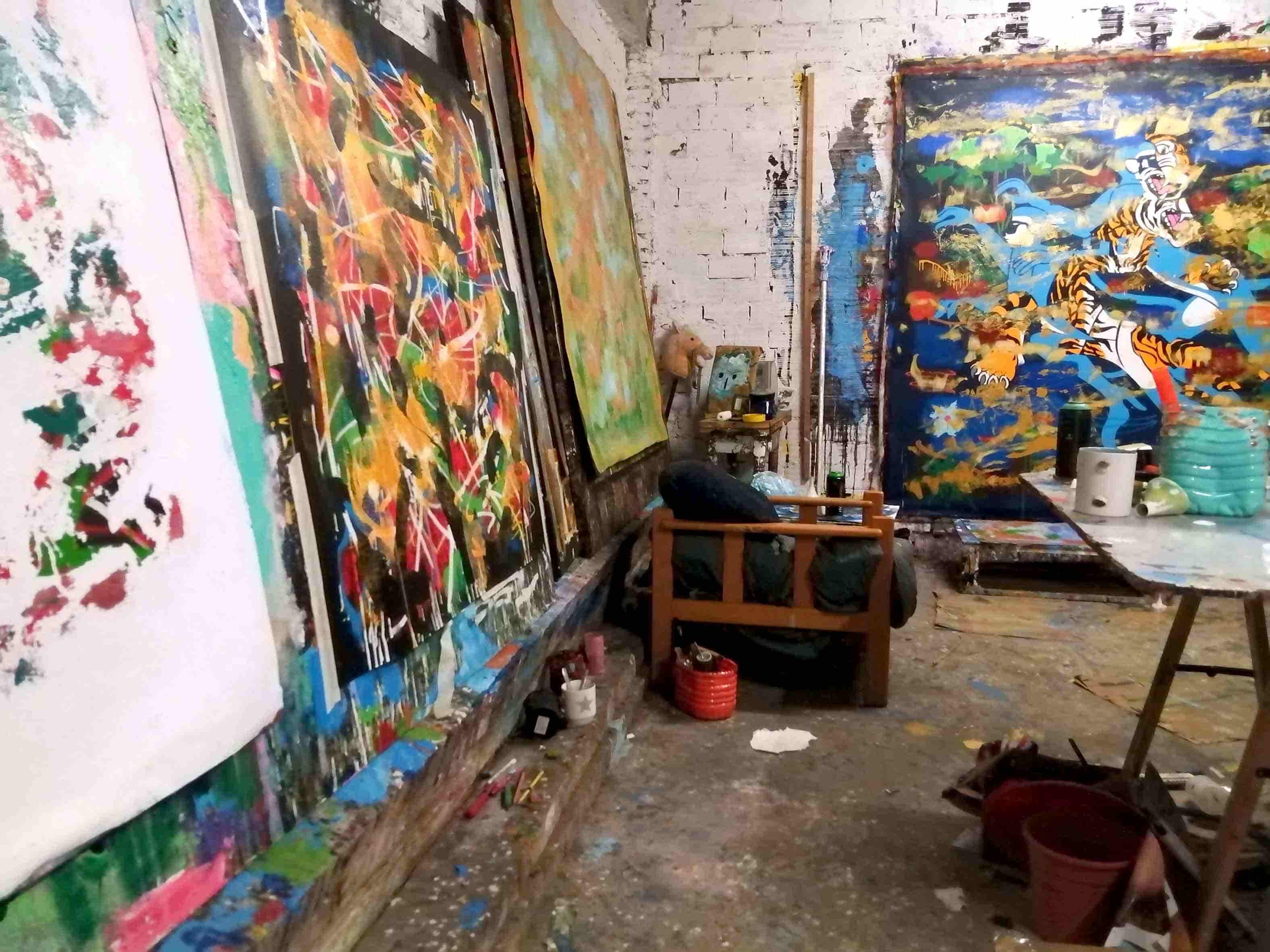
When we arrived everything was practically the same as when they left it the last day, although it was all full of objects from the beginning of the 20th century, it was incredible to look in there, like when Howard Carter could see the inside of Tutankhamun's tomb for the first time, which was all jumbled up, some things on top of others with no apparent order, among antique furniture, old baskets, suitcases... I had to clean it all and dismantle the mangers, but the troughs are still there.
My studio is distributed in three parts; the two side walls are for making large format canvases and the central part is a large table to work on paper, and on the walls I have mobile supports to work on medium format works. It is not very big, but it has served me for a long time and I can reach all the spaces quickly.
Did the Covid-19 crisis influence your artistic activity?
Yes, it has influenced my work, it has transformed my experience a lot. It is my vision of the world that has been transmuted the most and that modifies everything. My work is a reflection of my thoughts, of my lived experience, it is not a routine work, my workshop does not work mechanized, what I paint is closely linked to what I believe, feel, or perceive of the world on a daily basis, it is a poetic act.
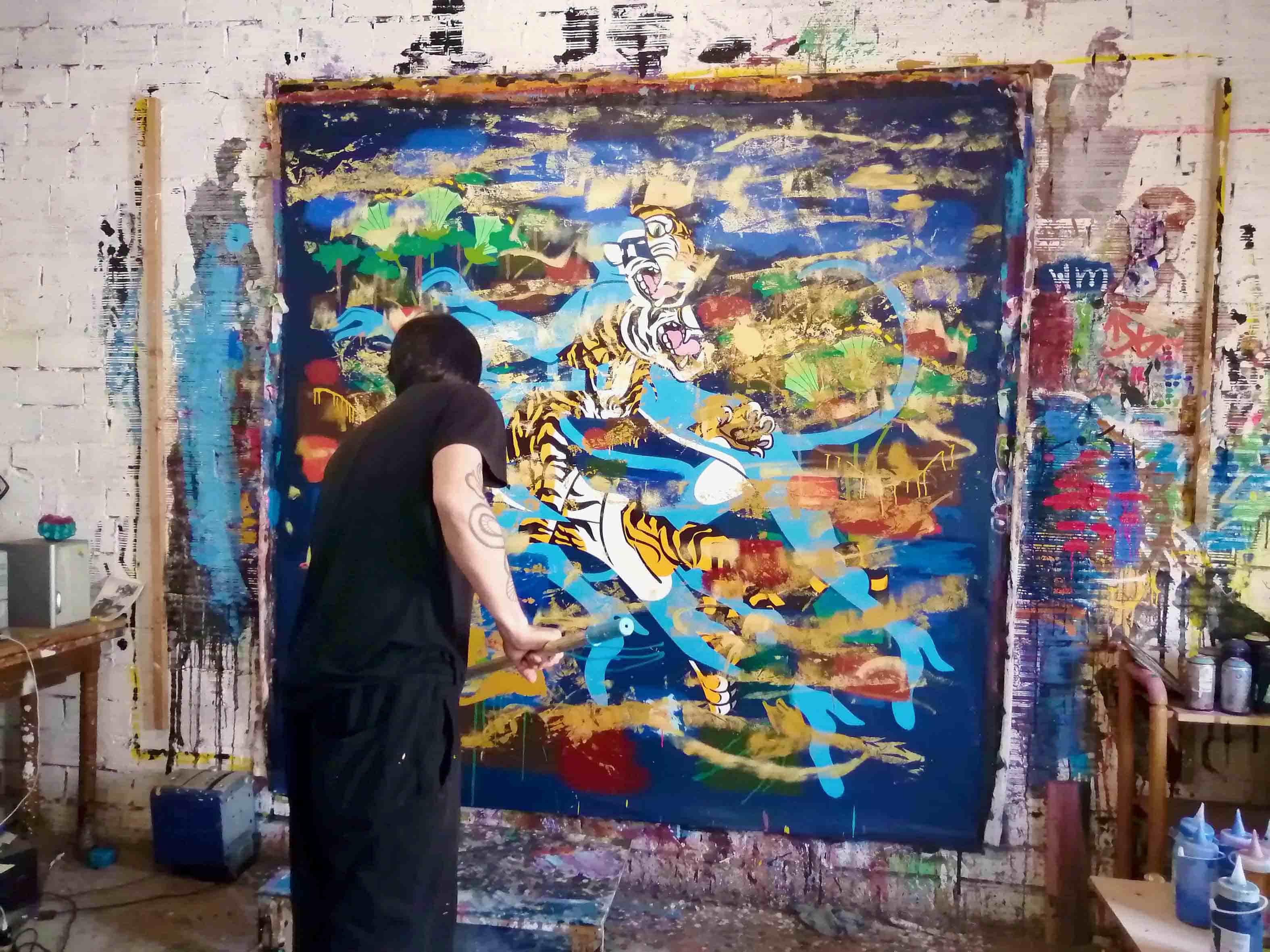
The deepest crisis is that of climate change in my opinion, it influences the fact that we have already gone through two crises in a row, since 2007 the first global economic crisis as you well know and in 2019-20 the health crisis, so it has been quite difficult just to live normally.
But luckily I have been able to continue doing my things, which for an artist is a luxe.
Do you have any artistic experience to share with us?
I remember as a teenager going many nights to Antoni Gaudí's Park Güell in Barcelona, at a time when it was not closed at night and only a few locals went there. It was a mystical encounter because the park is a living creation on 'the bare mountain', today called Monte Carmelo. A brilliant idea in my opinion of the great architect, an urbanization of residences near the city mixing nature and 'modernism' (Catalan art deco), in his time was condemned as an eccentric work, did not get the expected success and ended up in a public park, although today they charge admission.
We went there to soak in the night atmosphere, where it seems that you walk inside some magical dragon that has engulfed you, it really transports you to another dimension, pure aesthetic and spiritual joy, very inspiring.
What are your projects for the second half of 2021?
This summer I have been editing some prints I had postponed and preparing a new series of paintings.
I am also starting two books, one is an experiment in the old style of the cut-ups of Tristan Tzara, Brion Gysin, Julio Cortázar or William Burroughs. They are poetic-literary-pictorial-fantastic texts, which merge elements of the noir novel, poetry or surrealist storytelling. It deals with the jungle, snake men, talking tigers... All very dreamlike. It is my first foray into literature and I like the style to be subversive and hallucinatory, which apparently leads nowhere, as in dreams, which seem to lack logic, but hide a deep encrypted symbolism.

A mural painted by Germán Bel in Spain
The other text I'm starting is an idea I've had for a long time and it's about my wanderings in the origin of graffiti in Barcelona, but I'm just starting so I can't tell you much more about it.
I'm also going to participate in a collective exhibition in the Canary Islands, in Tenerife, together with 50 great urban and contemporary artists, in the Boreal Festival.
What is your favorite artwork?
I have many favorite works, I would have to choose one and that is very difficult, so if you allow me the license I will mention some at random; like the murals in the house of 'la quinta del sordo', the famous black paintings that Goya painted on the walls of his house, I think they are the most intense paintings that exist, we can see them miraculously in the Prado Museum before the hacienda collapsed, they had to be torn from the plaster and transferred to canvas with a revolutionary technique for the time called 'strappo' a few years before the hacienda collapsed.
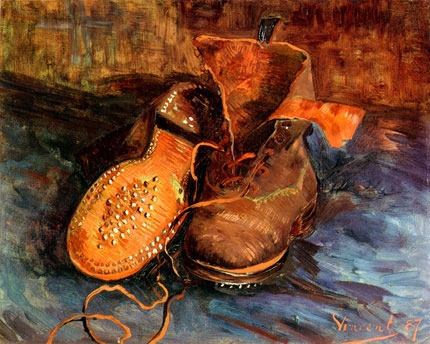
A pair of old shoes, Vincent van Gogh, 1887
A pair of old shoes (1887) by Vincent van Gogh and Landscape of Cagnes (1924) by Chaïm Soutine.
Not to mention works from the ancient world, such as the imposing sculpture of the goddess Sekhmet or the painted craters of Euphronios.
To conclude, I will mention some contemporary works such as The Dance of the Flesh (1994) by Miquel Barceló or the tremendous landscape For Paul Celan: Flower of Ash (2006) by Anselm Kiefer.
To finish interviews we usually ask for a quote that inspires you, an idea?
"Beauty is the blending of the finite and the infinite in the right proportions." Plato




